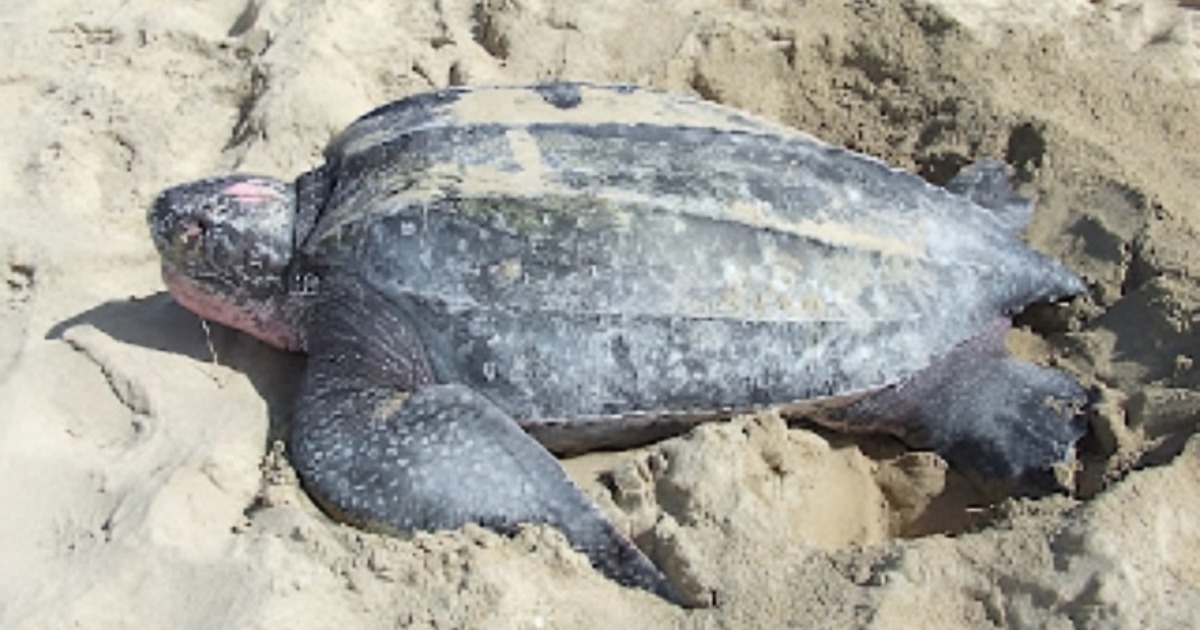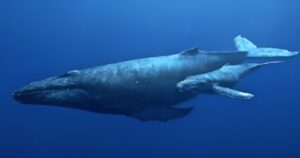Leatherback turtles – the colossal giants of the sea! Can you believe these incredible reptiles can grow up to a whopping seven feet long and weigh over 2,000 pounds?
That’s like having a real-life sea dinosaur right before our eyes! But wait, there’s more – these turtles are like living time capsules, the only ones left from a remarkable turtle family that goes way, way back in time, over 100 million years! Imagine all the thrilling adventures they’ve witnessed throughout history!
Once upon a time, Leatherbacks ruled the ocean except for the icy Arctic and Antarctic. But now, we have some sad news – their numbers are dwindling fast in many places around the world. It’s like the stars of a grand show slowly fading away.
Inside the Mighty Mouth of a Leatherback Sea Turtle – Things you will find
Let’s take a cool journey into the deep blue waters, where the amazing leatherback sea turtle lives. It’s like a giant from the past, and its mouth has some incredible secrets to share!
You see, this special turtle has a unique taste in food – it loves to dine on jellyfish! While other turtles enjoy plants and crustaceans, the leatherback prefers the slippery, jelly-like jellyfish. It’s like a yummy treat for them, especially in the dim, dark ocean.
Now, get this – the inside of the leatherback’s mouth is unlike any other sea turtle’s. Instead of hard, bony plates, it has a soft, rubbery lining. This special design lets it eat jellyfish super easily. And guess what? There are spikes in its mouth that help it hold onto those slippery jellyfish so they don’t escape!
But there’s something serious we need to talk about – plastic pollution. Plastic bags in the ocean look like jellyfish to these turtles.
When they eat them, it’s a big problem because the plastic bags get stuck in their soft mouth lining. Imagine eating something you can’t spit out – not fun, right? It can be harmful to the turtles and put them in danger.
We have to do something about it! Let’s join hands and work together to keep our oceans clean. We can reduce plastic pollution and protect these amazing creatures.
Turtle Shell
Leatherback turtles! Unlike their sea turtle cousins with hard, bony shells, these turtles have a super cool inky-blue carapace that’s flexible and feels almost like rubber! How cool is that?
And guess what? This unique design isn’t just for looks. It helps these leatherbacks become true champions of the deep seas! With those awesome ridges on their carapace, they become super streamlined, like underwater superheroes! They can dive down to a mind-boggling depth of 4,200 feet – deeper than any other turtle can go. No wonder they hold the record for deep diving!
It’s like they’re having a fun underwater adventure, exploring the mysterious ocean world. And the best part is that they can stay underwater for a whopping 85 minutes! That’s like watching an entire movie underwater! These incredible turtles are truly the masters of the ocean’s depths!
Population Range
Leatherback turtles! These remarkable creatures boast the broadest global distribution of all reptiles, and possibly even among all vertebrates!
They are true adventurers, gracefully navigating the tropical and temperate waters of the vast Atlantic, Pacific, and Indian Oceans, as well as the enchanting Mediterranean Sea. But their journey doesn’t stop there!
These intrepid travelers venture as far north as the breathtaking lands of Canada and Norway, and as far south as the captivating realms of New Zealand and South America.
Cold Water Adaptations
While their reptile cousins might feel the shivers in cold water, leatherbacks have a fantastic trick up their sleeves! They’ve got a unique set of adaptations that make them masters at handling the chill. It’s like having a built-in heater that keeps them cozy even in the coldest seas. How awesome is that?
But that’s not all! Leatherbacks also have some super cool changes in their swimming activity and blood flow that help them adapt to the cold. It’s like they have their secret ways to stay warm and snug.
And here’s the best part – they’ve got an extra layer of fat acting like a snuggly blanket! Just imagine having a warm jacket on all the time. No wonder they can handle the chilly ocean waters like champions!
Reproduction
Can you believe it? Leatherbacks hold the record for the longest migrations among all sea turtles, traveling an astonishing 3,700 miles each way between their breeding and feeding areas. That’s like going on an incredible road trip from one end of the country to the other!
During the breeding season, something truly magical happens. After mating in the vast sea, the female leatherbacks make their way to the sandy shores to nest. It’s like a special nighttime ritual full of wonder! They carefully dig a deep hole in the soft sand and gently place around 80 eggs inside it. It’s like they’re creating a treasure chest of new life!
Once the eggs are safely tucked in, they fill the nest and leave the area looking a bit disturbed. It’s like they’re playing a clever trick on predators, making it challenging for them to find the precious eggs. And then, with their mission complete, they bid farewell to their nest and gracefully return to the sparkling sea.
The science behind the leatherback hatchlings
The science behind the leatherback hatchlings! Did you know that something as simple as the nest temperature decides if they’ll be males or females?
Here’s how it works: When the nest temperature is around 85.1 degrees Fahrenheit, a mix of male and female hatchlings pop out to say hello. But when it gets a little warmer, it’s like a girl party – all the hatchlings turn into lovely females! On the other hand, when it’s a bit cooler, it’s a boys’ club – all the hatchlings become strong and handsome males!
But wait, the adventure doesn’t end there! Once the baby girls make their way into the big, wide ocean, they start exploring like true adventurers. They’ll travel through the sparkling waves, meeting new friends and discovering fascinating places. When they grow up and become big girls, they’ll come back to their birthplace to lay their own eggs. It’s like a special family tradition passed down through generations!
Now, let’s talk about the boys. Once they hatch and see the vast ocean, they decide to stay there for life. They become sea explorers, exploring far and wide, and having great adventures with their fellow sea creatures. It’s like they become the ocean’s very own guardians, keeping it safe and protected.
Threats to Survival
It’s heart-wrenching to know that many leatherbacks face tough times because of humans. Can you believe that out of a thousand hatchlings, only one grows up to be a strong adult? That’s such a tiny number!
Humans sometimes take the precious eggs from the nests for their own needs, like for food or even as something they believe can bring them special powers. It’s not fair to the leatherbacks, who work so hard to protect and care for their eggs.
But that’s not all, these amazing creatures also get tangled in fishing lines and nets, which can be really dangerous for them. Sometimes, they accidentally bump into boats, and that can hurt them badly too. It’s like they have to face obstacles at every turn!
To make matters worse, they sometimes eat floating plastic pieces, mistaking them for their favorite food – jellyfish. Can you imagine having 11 pounds of plastic in your tummy? It’s super harmful and makes them really sick.
Leatherbacks in the Atlantic and Pacific ocean
The numbers of Leatherbacks in the Atlantic are holding steady or even going up. That’s some great news for our big-flippered friends! But wait, things aren’t going so well for their Pacific pals. Their population is shrinking really fast and We need to find out why and help them!
You know what’s causing some of the trouble?
It’s because of human activities. People sometimes take the leatherback eggs, thinking they’re yummy treats or even aphrodisiacs. Not cool, right? Plus, fishing gear can accidentally trap them, and they get hurt by boats too. Oh, and here’s a strange thing – they sometimes eat floating plastic that looks like their favorite food, jellyfish. But that’s not tasty for them at all!
It’s not all bad news, though! Some leatherback homes in the Pacific have gone missing, like a magical disappearing act. But brave scientists are on the case! They are like detective heroes, tracking, and studying these majestic turtles. Their mission is to learn all they can about these ancient giants and find ways to keep them safe.



